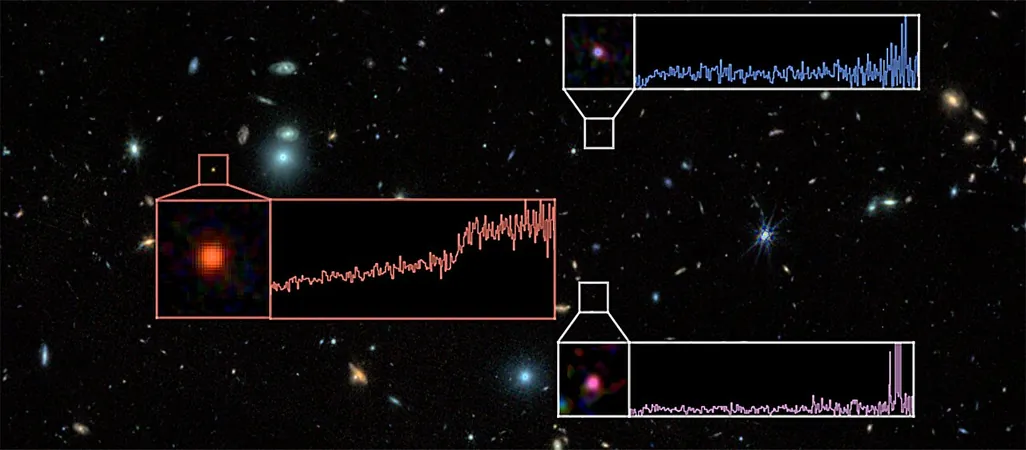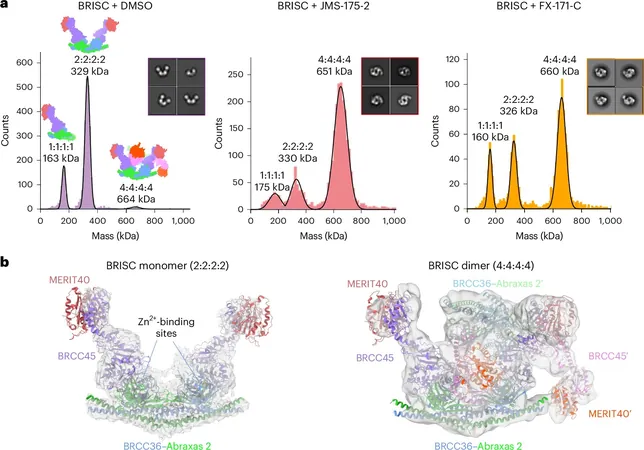
Shocking Discovery: Galaxies Are Halting Star Formation Just 700 Million Years After the Big Bang!
2025-04-02
Author: Li
Shocking Discovery: Galaxies Are Halting Star Formation Just 700 Million Years After the Big Bang!
An ambitious study led by astronomers from the University of Geneva (UNIGE) has unveiled astonishing evidence that red, “dead” galaxies were already ceasing star formation a mere 700 million years after the Big Bang. This groundbreaking revelation challenges long-held beliefs about how galaxies evolve in the early universe.
For decades, it was widely assumed that in the infancy of the cosmos, galaxies would continue to actively form stars as they absorbed gas from their surroundings. However, the James Webb Space Telescope (JWST) has turned this expectation on its head, revealing that many galaxies stopped forming stars far earlier than theoretical models predicted.
The Quest for Quiescent Galaxies
The research team’s findings were part of the RUBIES project (Red Unknowns: Bright Infrared Extragalactic Survey), which utilized the powerful capabilities of JWST to analyze a plethora of galaxy spectra from the early universe. Contrary to expectations that quiescent galaxies would require lengthy periods for star formation, astronomers have now documented the existence of massive quiescent galaxies (MQGs) appearing much sooner in cosmic history.
Among their discoveries, they identified a record-breaking MQG, named RUBIES-UDS-QG-z7, with a staggering redshift of 7.29. This galaxy formed over 10 billion solar masses in just the first 600 million years post-Big Bang, before abruptly ceasing star formation, showcasing a surprisingly mature stellar population for such an early epoch.
A Tension in Cosmic Models
This discovery creates a significant disconnect between theoretical predictions and the observations made using JWST. Models of galaxy formation have failed to accurately account for the rapidity and abundance of these quiescent galaxies, which seem to be over 100 times more prevalent than previously anticipated. The implications are profound; researchers may need to reassess key parameters in their scientific models, such as the effects of stellar winds and the dynamics of outflows driven by star formation and supermassive black holes.
The early cessation of star formation in massive galaxies poses intriguing questions about the mechanisms of galactic evolution and the factors that influence when galaxies “quench” their star production.
What Does This Mean for the Universe?
The size of RUBIES-UDS-QG-z7, which measures merely 650 light-years across, indicates a high stellar mass density akin to the most dense regions found in elliptically shaped galaxies at slightly later cosmic times. This poses thrilling possibilities regarding the formation of the universe's earliest structures, hinting that the centers of today's massive elliptical galaxies might have already begun forming within the first few hundred million years of the cosmos.
Astronomer Pascal Oesch, co-author of the study, emphasized the importance of these findings: "Unraveling the origins of such massive quiescent galaxies is fundamental to our understanding of cosmic history and the intricate processes that sculpt our universe."
A New Era of Astronomical Discovery
As we continue to explore the depths of our universe with advanced technologies like the JWST, it is likely that we will uncover even more mysteries about cosmic evolution. The early cessation of star formation in these galaxies not only reshapes our understanding of galactic life cycles but incentivizes ongoing research into the dynamic forces at work in the early universe.
Stay tuned as scientists delve deeper into these celestial enigmas! What other surprises does the universe hold for us? Only time and technology will tell!




 Brasil (PT)
Brasil (PT)
 Canada (EN)
Canada (EN)
 Chile (ES)
Chile (ES)
 Česko (CS)
Česko (CS)
 대한민국 (KO)
대한민국 (KO)
 España (ES)
España (ES)
 France (FR)
France (FR)
 Hong Kong (EN)
Hong Kong (EN)
 Italia (IT)
Italia (IT)
 日本 (JA)
日本 (JA)
 Magyarország (HU)
Magyarország (HU)
 Norge (NO)
Norge (NO)
 Polska (PL)
Polska (PL)
 Schweiz (DE)
Schweiz (DE)
 Singapore (EN)
Singapore (EN)
 Sverige (SV)
Sverige (SV)
 Suomi (FI)
Suomi (FI)
 Türkiye (TR)
Türkiye (TR)
 الإمارات العربية المتحدة (AR)
الإمارات العربية المتحدة (AR)